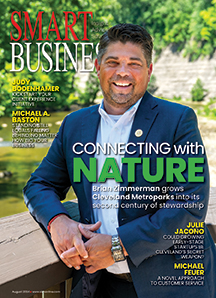
I want to take you back a few months, and let’s all pretend it’s October. Yes, that month is typically the start of the Major League Baseball playoffs, but that really isn’t what I want to chat about. What I really want to discuss is Halloween. No, not the costumes you or your family might have worn or the candy you handed out during trick-or-treat. What I want you to think about is how you carve your pumpkin — yes, your pumpkin.
I have actually presented this at a number of conferences in the past, and what I typically do is bring someone randomly up on stage with me. After a quick introduction, I give the volunteer a magic marker with a picture of a pumpkin and one simple instruction. Tell and show us how you carve your pumpkin. After a few seconds of amazement and looking at me very strangely, the person starts to follow the task. Here is what everyone usually does:
1. Go to the store and buy a pumpkin.
2. Cut the top off.
3. Take out all of the seeds and guck.
4. Stencil a picture of what he or she wants to cut out.
5. Cut out the picture.
6. Move the pumpkin to the front stoop or the window.
7. Put a candle in and enjoy his or her masterpiece.
Sound familiar? Most people I have ever spoken to about this do it the exact same way. When I ask the volunteer who taught him or her how to do that, he or she quickly and proudly responds “my parents,” and when I ask who taught the parents, again, the volunteer proudly answers “my grandparents.”
It is safe to say that learning has been passed down for a number of generations. I then ask the volunteer, “What if there was a better way to carve your pumpkin? What if there was a more efficient way to do it? Would you be open to that?” Most people, with hesitance, respond with a quiet, “Yes — we have been doing it this way forever, but yes, I would be open to that.”
I then say, “What would happen if you carved your pumpkin from the bottom?” In other words, different and the exact opposite than you have done in the past. After looking at me very oddly, they say, “Why would I do that?”
By carving the pumpkin from the bottom, three things will happen:
1. Gravity will allow some of the seeds and guck to fall out naturally.
2. By cutting off the bottom, the pumpkin is easier to carry, since you will be holding it by the stem.
3. It is much easier to light the candle, and you won’t burn any of your hair on your arm like most of us (including myself) have done in the past.
What’s really funny is most people really get my point. They understand what I am saying and more than 60 percent of the audience actually agrees to change and do it that way in the future.
That’s great, Merrill — but, really, what’s your point?
I have celebrated my 26th year of being in business, and for me, the past few years have been the hardest business environment I have ever, and perhaps will ever, be involved with. As a business leader, all of us have reviewed our business systems, procedures and technology in an effort to increase efficiencies and improve the bottom line.
The pumpkin story is a little way to illustrate that just because we have been doing something for hundreds of years doesn’t mean it is the most efficient way of doing it. All of us need to look at what we are doing, how we are doing it and find ways to increase efficiencies. So I ask you — how do you carve your pumpkin?
Merrill Dubrow is president and CEO of M/A/R/C Research, one of the top 25 market research companies located in Dallas. Dubrow is a sought-after speaker and has been writing a blog for more than four years. Reach him at (972) 983-0416 or [email protected].

